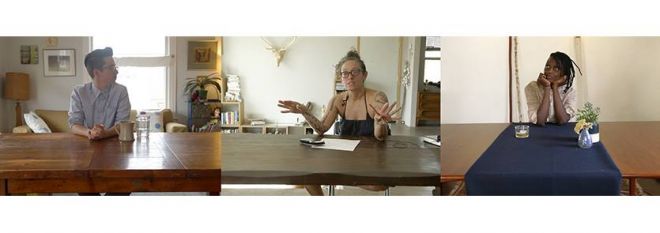
Johanna Breiding’s practice stems from photography, considering the medium’s history, its representational role and limits. Expanding to video and installation, Breiding locates her work within the intersection of analog and digital technologies, the construction of gender and cultural identity, and a critique of heternormative ideologies within the personal and social space. Recent projects address a range of topics, including the death of analog photography via small town Keeler in Owens Valley, CA; the art historical canon of Land Art through portraiture and landscape photography; and the notion of hyperobjects and the (Post) Anthropocene. Breiding previously taught undergraduate and graduate courses in New Genres at the San Francisco Art Institute and will be teaching a workshop at California Institute of the Arts in the Spring. She is based in Los Angeles and originally from Switzerland.
From 7:30-9pm, Johanna Breiding will join us for a lecture and Q & A to discuss her work and recent collaborative show titled Epitaph for the Family which was on view at Human Resources, Los Angeles in November 2015. Epitaph for the Family was named one of the best shows of 2015 in Los Angeles by Art in America.
All lectures are free and open to the public. If you would like to receive information about future events please email galvez@atlandsedge.com with “subscribe” in the subject line.
_______________________________
at land’s edge serves as a catalyst for decolonial thought and action. Our programs span the realms of visual research pedagogy, public events, intermedia productions, publications, and residencies. Our aim is to facilitate creative connections across people, places, materials, and discourses, to bring cultural producers together to undiscipline ways of knowing, and to press the limits of creative praxis to engage with the political realities of this world.
While we are based in Los Angeles, at land’s edge has no one permanent physical location. Instead, our programs traverse this city’s political geography and demand an engagement with its borderlands. This is no accident, for at land’s edge develops in reaction to the many forms of economic, social, cultural, and historical exclusion that art and its discourses reproduce. at land’s edge works productively with this exclusion. It dissolves the walls of the institution and asks how the exile, nomadism, and wandering that such exclusion creates also contains the condition of possibility for dialogue and coalition politics across marginalized communities.
